Daylight Savings Time
 OMG, NO!
OMG, NO!
It’s sucking my will to live.
 OMG, NO!
OMG, NO!
It’s sucking my will to live.
Tyr is a Norse god who is a member of the Aesir, one of the most powerful of the gods, and the principled warriors among them. He is the namesake of the day Tuesday (Tyr’s Day) and is renowned for being the bravest of all the gods and his pursuit of justice.
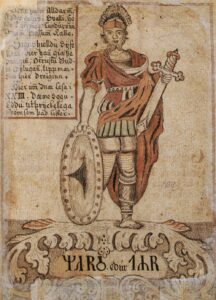
Tyr was once a significant Norse deity, although his importance has been overshadowed by gods such as Odin and Thor. Tyr is one of the oldest of the Gods, with references to him in texts dating back to the Viking age. According to Norse mythology, he is the son of Odin and Fjorgyn (Jord) or Hymir and an unknown Jotun.
Tyr is the god of justice, law, and technical skill. He is a protector of the people and their rights, defending the innocent from criminals. Tyr is also a god of war, leading his warriors into battle with great courage and skill. He is frequently seen depicted with one hand missing. Tyr sacrificed his hand to Fenrir to bind the wolf and prevent any further chaos.
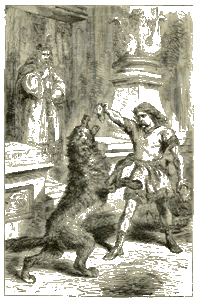
The most famous story involving Tyr is the story of Fenrir, a huge and powerful wolf who is the son of Loki and Angrboda, a Jotun. A Norn prophesized that during Ragnarok Fenrir would devour Odin and much of Midgard. To avoid this, the gods decided to chain Fenrir.
But Fenrir broke any chain the gods put on him, so the gods asked the Dwarves to make an unbreakable chain. The Dwarves created it with the sound of a cat’s footfall, the beard of women, the roots of mountains, the sinews of the bear, the breath of the fish, and the spittle of the birds. The chain, Gleipnir, was very light, but nonetheless stronger than steel.
Fenrir didn’t trust the gods when he saw Gleipnir and demanded someone put their hand in his mouth as a token of honestly that they would remove it should he not be able to break it. None of the gods were willing to do so, except Tyr.
Tyr bravely stepped forward and offered to put his right hand into Fenrir’s mouth, knowing what would happen. After the gods bound Fenrir with the chains, Fenrir could not break them. Hence, Tyr lost his right hand.
Tyr is a god of commitment and truth. He is a symbol of loyalty and strength, and is seen to honor his word and stand by his friends or loved ones no matter the circumstances. He has strong codes of honor, seeing no shame in admitting when he is wrong or making amends when necessary.
Tyr is a deity whom people highly respect. His followers frequently invoked in both personal and legal matters. He maintains law and order among the gods and humans. He is revered for his power and his belief in justice above all else.
Tyr is an excellent example of the Norse concept of virtue. He is a representation of strength, honor, courage, and virtue. He was willing to make sacrifices and put himself at risk in order to protect others, making him a model of courage and morality.
Did you know you can become my patron for as little as $5 a month? This entitles you to content not posted anywhere else. Plus you get to see posts like this three days before the public! Without patrons, I’d be having a very hard time keeping this blog going. Become a patron today!Become a Patron!
Well, it’s that time again to talk about the Viking Calendar. This month is Mörsugur, the second Yule month. Mörsugur is also known as jólmanoðr (Yule Month) and hrutmánuðr/hrutmánaðr (Ram Month). It is the third winter month. Yule proper occurs during Mörsugur.
The name seems odd to our modern sensibilities. Mörsugur is the fat and bone-sucking month because that’s how our ancestors got their calories during this freezing time. By cracking open bones and sucking on them to get the marrow, the Northen ancestors were able to get enough nutrition to survive the cold.
Mörsugur, aptly translated to “the bone-sucking month”, is an ancient Viking month held in winter right after Yule (the winter solstice). It is the coldest, longest and darkest of all Viking months as the days near Yule are the shortest. This is because Mörsugur occurs at the end of winter and marks the point when the sun returns and the first signs of spring begin to appear.
Mörsugur ran from mid to late December into January. At this time, there weren’t any fresh vegetables or fruit. If you ate fresh food at all, it came from animals: meat, fat, eggs, milk, and products from those foods.
The name may have originated from the traditions the Vikings practiced during Mörsugur, when the whole community would undertake a “bone-sucking” ceremony. The Norse practiced this tradition while they celebrated the longest night of the year, symbolizing the end of Yule. As part of the ceremony, everyone gathered around to “suck on bones”; they would pass around bones that had been cut up, the pieces containing marrow and fat. This practice was believed to bring good fortune for the upcoming year. Thus the Norse month of Mörsugur started. It was a month-long celebration that occurred during the winter months in Scandinavian and Baltic countries.
The month’s name may have also come from an ancient Norse practice called Haflgerðing, or “bone-worming”. Norse peoples carved a tiny hole in an animal bone using a knife, and then inserted a small object into the bone, either a piece of cloth or a tiny animal bone. They then buried the bone in the ground, and they believed that by doing this, the gods would more likely grant the wishes of the person who buried the bone.
Mörsugur was a special month for our ancestors, as it was a time for families and communities to come together and celebrate the winter season. During Mörsugur, our Northern ancestors indulged in their traditions and ancient customs. The center of attention during the month was feasting, drinking, and games. They sang various songs and danced; families and friends enjoyed large feasts. People feasted while sitting around a fire and sipping drinks like mead. Meals included beef or pork, smoked or salted fish, legumes, vegetables, and cheeses.
The Viking played many games, including those played indoors and those played outdoors. Examples of outdoor ngames include rolling snowballs, skis, and sleighs. Indoor games included dice and board games and the Viking version of chess. Like today, people enjoyed parties, both indoors and out. Concerts and theatrical performances were also popular.
Mörsugur was also a month of religious observance. People dedicated the Mörsugur celebrations to Odin and Thor. They inscribed runes on tree branches to give luck for the new year. At midwinter, our ancestors lit sacred fires to celebrate the winter solstice. The celebrations emphasized joy over fear. People believed that a good harvest, success, and protection from natural disasters depended on the gods.
During this month, people made offerings of food and drink to the gods and wights. Our ancestors would also offer gifts of horses and weapons to their ancestors. The Vikings lived under the death’s constant threat, so this was the time to ask for prosperity from all those who could help them.
Mörsugur was an ancient celebration, yet it still lives on today, through the culture and traditions that are celebrated throughout the Nordic region. In Finland, a special dish called Mustamakkara is prepared during this month, which consists of a black sausage. The Swedes serve a traditional drink called Glogg from Yule until Christmas. In Norway, there is still a tradition of sacrifice to the goddess Freyja during Mörsugur. This sacrifice is a small offering made by throwing coins into a bowl of water.
The month of Mörsugur is a month to celebrate the gods and ask for abundance. The ancient Norse people created these joyful celebrations which we can still enjoy today. The month of Mörsugur is just one of many special occasions in the Viking calendar.
—
Did you know you can become my patron for as little as $5 a month? This entitles you to content not posted anywhere else. Plus you get to see posts like this three days before the public! Without patrons, I’d be having a very hard time keeping this blog going. Become a patron today!Become a Patron!
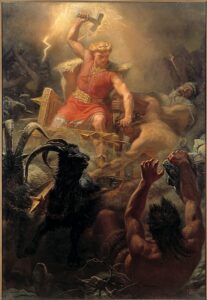 Thor is one of the most popular Norse gods, renowned for his superhuman strength and courage. An Aesir, Thor is the god of thunder, lightning, and storms. He is a major figure in Norse mythology, appearing in several forms, including in the Prose Edda, the Heimskringla, and the sagas of Icelanders.
Thor is one of the most popular Norse gods, renowned for his superhuman strength and courage. An Aesir, Thor is the god of thunder, lightning, and storms. He is a major figure in Norse mythology, appearing in several forms, including in the Prose Edda, the Heimskringla, and the sagas of Icelanders.
Thor is a powerful and complex deity whose story has been retold throughout history. He is the son of Odin, the Allfather, and the giantess Jörð.
Thor is a fierce warrior who is strong and courageous, and the protector of the Gods, Midgard, and its inhabitants. He wields a mighty hammer, Mjöllnir, which helps him control the forces of nature, like lightning and thunder. The hammer is so powerful that nothing can withstand its force, except for the scales of the serpent, Jörmungandr.
In Norse mythology, Thor has several roles and responsibilities. He is the God of Thunder, the protector of Asgard and the realm of the Gods. Thor is also the guardian and protector of the humans and other creatures of Midgard. He is the god of strength and courage, and portrayed as a mighty warrior. Stories of his battles with giants and other creatures of chaos depict his mighty strength.
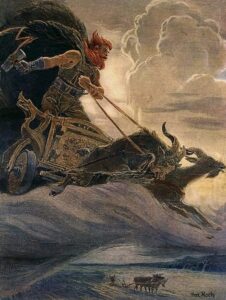 Thor’s chariot is pulled by two magical goats, Tanngnjostr and Tanngrisnir. These magical goats pull the chariot through the sky and carry him wherever he wished. Thor would summon the goats with Mjöllnir and they would pull him and his chariot, allowing him to travel across the nine realms. According to legend, after a journey Thor would kill the goats and eat them, but the next day they would be magically restored to life.
Thor’s chariot is pulled by two magical goats, Tanngnjostr and Tanngrisnir. These magical goats pull the chariot through the sky and carry him wherever he wished. Thor would summon the goats with Mjöllnir and they would pull him and his chariot, allowing him to travel across the nine realms. According to legend, after a journey Thor would kill the goats and eat them, but the next day they would be magically restored to life.
His most famous story is that of Thor and Jörmungandr, where the giant serpent challeges him. Unfortunately, his hammer, Mjöllnir, is unable to stop Jörmungandr. To defeat the great serpent, Thor engages in a fierce battle using strength and courage and is eventually successful in killing the giant creature, losing his own life in the battle.
In modern times, people consider Thor as a symbol of strength, courage and resilience. He is also a popular figure in pop culture, appearing in comic books, movies and other forms of media. Of course, he is one of the gods Heathens venerate.
At one point in time, our ancestors may have associated Thor with the sun and the sky, because of his control over the forces of nature. This could be one explanation for why his hammer, Mjöllnir, is depicted with a whirlwind around it, representing the wind and storm of Thor himself.
Thor is an important figure in Norse mythology, and his stories and adventures remain a part of modern culture. People often describe him as the god of thunder, strength, and courage. He is the fierce warrior and protector of the gods, Midgard, and its inhabitants. His strength and courage are legendary, and his stories will continue to be retold for generations to come.
—
Did you know you can become my patron for as little as $5 a month? This entitles you to content not posted anywhere else. Plus you get to see posts like this three days before the public! Without patrons, I’d be having a very hard time keeping this blog going. Become a patron today! Become a Patron!
Happy Yule 2022! Welcome to the Rational Heathen’s Yule (b)Log–see what I did there? I want to wish you a happy Yule 2022.
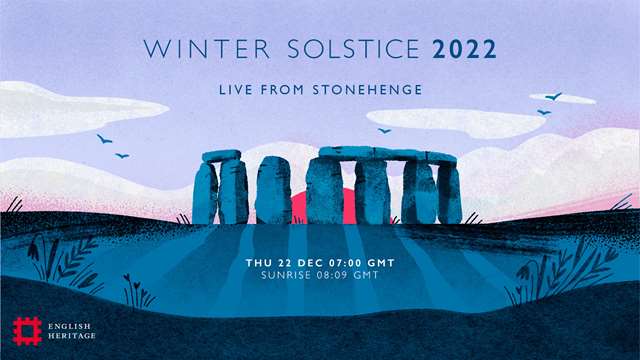
Most of this post are roundups of past Yule posts, but I have a special treat for you! You can watch the Winter Solstice at Stonehenge live, which is way cool, thanks to the English Heritage site. The live video will happen the morning of December 22nd due to the timing of the winter solstice. Click on the link above to get access to the various channels, including their YouTube Channel. It’s all free and very cool.
Finally! I cover Ýlir as the first of the two Yule months. I also cover feasting and Yule.
So, this isn’t quite a post on Yule as it is on how Christians borrowed liberally from pagan celebrations to celebrate Christmas as we know it. Still, I count it with the season. Check it out.
Yeah, everyone’s got them. And if they’re Christian, they may have a tough time with your Heathen ways (pun intended!). Here’s a way to make everyone happy.
Yule can be a bit lonely for the solitary Heathen, so here are some cool ways to celebrate it by yourself.
Because I should be talking more about the history of Yule and how it relates to the modern Heathen.
Bah humbug! Are you the Scrooge around Yule? So am I. So, here are some ways to cope.
Heard of the Yule Goat or Yulebok? Well, if you haven’t, here’s your chance to add a little paganism to your relatives’ Christmas under the guise of Christmas.
Is Santa Claus Christian or Heathen? Should you teach your kids about him?
When life intrudes and you can’t properly celebrate Yule.
I know many Heathens want to celebrate Yule, but don’t necessarily have an idea how to do it. This is a great book, if you’re looking for ideas.
—
Enjoy! And have a Happy Yule 2022!
The Rational Heathen
—
Disclaimer: This post contains affiliate links. If you purchase something from these links, I get a small stipend which helps support The Rational Heathen. I would encourage you to support my site. Thanks.
Did you know you can become my patron for as little as $5 a month? This entitles you to content not posted anywhere else. Plus you get to see posts like this three days before the public! Without patrons, I’d be having a very hard time keeping this blog going. Become a patron today! Become a Patron!
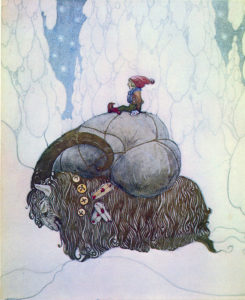 I had been meaning to write about Ýlir for some time, but life and everything has gotten in my way (blah, blah, blah, excuses, excuses). So, I’m looking at the end of Ýlir and wondering if I can pull off a post before Yule. well, here goes very little.
I had been meaning to write about Ýlir for some time, but life and everything has gotten in my way (blah, blah, blah, excuses, excuses). So, I’m looking at the end of Ýlir and wondering if I can pull off a post before Yule. well, here goes very little.
The Norse divided the year into two seasons: winter and summer. Ýlir is the second month of winter in the Old Norse calendar. It is also the first Yule month. It generally started late November and ran until late December, usually ending on the Winter Solstice. The Viking calendar was flexible because it was set to the lunar phases. So, the actual dates varied when compared to our own calendar.
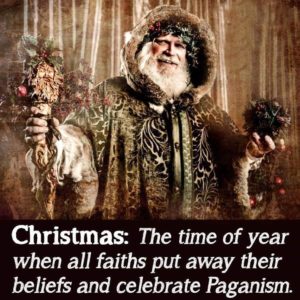 It seems a number of websites have different opinions on Ýlir and Yule. Some sources claim that Ýlir gets its name from Yule, which is named after Jólnir from the word Jól. Jólnir is one of Odin’s many names, so it stands to reason that Ýlir is a reference to Odin.
It seems a number of websites have different opinions on Ýlir and Yule. Some sources claim that Ýlir gets its name from Yule, which is named after Jólnir from the word Jól. Jólnir is one of Odin’s many names, so it stands to reason that Ýlir is a reference to Odin.
The problem with this is that an Icelandic site points out that this is debatable because in 8th century Old English, géol, means Christmas festival. England was in the middle of conversion to Christianity by the 7th century and was mostly converted by the 8th century. That being said, there were still holdouts and pockets of paganism, so it’s likely that géol is what was carried over from the pagan winter celebration.
The word géol is the Anglo-Saxon word for Yule. We know that Norse pagans celebrated Jul — the old name for Yule — and the Saxons were Germanic tribes with the same gods as the Norse. Now whether Ýlir references Yule is arguable, but I suspect it does.
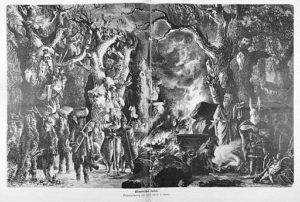 Now that we’ve beaten a dead etymological horse, let’s look at Yule. In many cases Norse and Germanic pagans held feasts that lasted twelve days and included the solstice. As I mentioned in my last post, land owners and nobles frequently used winter celebrations as a way of displaying their wealth and power. After all, what gave you more cred than hosting big feasts that had foods people normally didn’t have this time of year? The commoners loved it because it meant more food and celebrations. The nobles loved it because it was a good time, all around.
Now that we’ve beaten a dead etymological horse, let’s look at Yule. In many cases Norse and Germanic pagans held feasts that lasted twelve days and included the solstice. As I mentioned in my last post, land owners and nobles frequently used winter celebrations as a way of displaying their wealth and power. After all, what gave you more cred than hosting big feasts that had foods people normally didn’t have this time of year? The commoners loved it because it meant more food and celebrations. The nobles loved it because it was a good time, all around.
Not everything was about war during the Viking era, but even in the winter months, noblest tried to outdo each other. What better way to strengthen your people’s loyalty than show how generous you were?

Yule was a twelve day celebration of the return of the sun. Even if you lived where you wouldn’t see the sun above the horizon, the winter solstice marked the last day of the year where the darkness was at its longest. After winter solstice, you could guarantee the days would start growing longer again.
In many ways, Yule signified the return of Baldr, the god of the summer sun. Just as summer solstice was the longest day before the northern hemisphere retreated into darkness, Yule marked the cycle of return to the light. So if Yule is Baldr’s return, summer solstice was the death of Baldr by Hodr’s hand.
I cover the history of Yule in this post, so I’m not really inclined to do so again. I also cover the Yule Goat and other Yule celebrations in previous posts, so check them out.
Have a wonderful Yule!
—
Did you know you can become my patron for as little as $5 a month? This entitles you to content not posted anywhere else. Plus you get to see posts like this three days before the public! Without patrons, I’d be having a very hard time keeping this blog going. Become a patron today!Become a Patron!
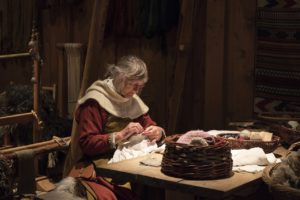
I thought I’d talk about Viking winter preparations and activities since we’re in December. Preparing for winter isn’t something we modern Heathens have to worry about much. I mean, maybe you get your car serviced or make sure that you’ve got snow tires on your car, but actual winter preparations isn’t usually something most people in modern, developed countries really have to worry about.
I often ponder how our ancestors coped with their hard lives in the context of the seasons. While many of us are worried about preparing for back-to-school and the holidays, our Northern ancestors were engaged in surviving another winter with brutal cold and an unforgiving landscape. Little wonder that they turned to the gods to aid them when they could.
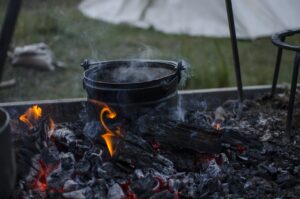
So what were the Viking winter preparations and activities? Most of our ancestors were farmers until modern times. Farming, in most cases, was how people supported themselves, their families, and their communities. They might have been required to pay their lord a certain percentage of food they grew, but in many cases, what people grew was necessary for survival during the winter months.
Most of what people ate were foods that they grew, raised, gathered, or hunted. Sure you might trade with your fellow landowner for something they grew, or occasionally bought exotic foods or spices from traders, but for the most part, your food was what you could produce.
If you had need of work such as a blacksmith, you might employ one, have a slave who could do the work, or do it yourself. You might pay in barter, such as food or products the smith might need, or if you obtained silver from raiding or trade, you might use that as payment.
No doubt winter was a time for celebrating, since the farm work was pretty much done, especially if the harvest was good. After slaughtering the animals you weren’t going to keep through the winter, you had an abundance of meat, which meant preserving it or feasting on it.
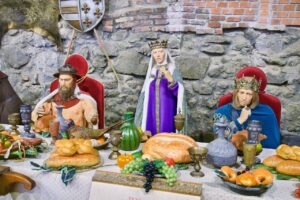
I was listening to a podcast the other day where the expert pointed out that feasts in the Middle Ages were often used to show status. The lord would often have feasts to show off his wealth by offering foods that perhaps others didn’t have. This gave them a higher status in the community, or more cred.
Using feasts to show off one’s generousity and wealth makes sense. Cred, even back then, was vitally important in small communities. So, even our Viking ancestors probably showed off their wealth by providing feasts. What better time than after harvest and at solstice?
So, with all this time, what did our ancestors do? Sure, they hunted, tended to their animals and equipment, and preserved food, but they had free time. Much of it was spend playing games and doing outdoor activities.
Apparently, Northern peoples were gamers and played a lot of “tafl games” or table games. We know they played Hnefatafl, which died out when chess became popular. We only know the play rules because the Sami played a variation of it that is called Tablut. Tablut was still played in the 18th century and a clever botanist wrote down the rules during an expedition to Lapland.
There’s a lengthy explanation why Hnefatafl is a reconstucted game, including poor translations of the botanist’s writings and that’s it’s a variant and probably not the actual game.
Anyway, you can play it online, if you want to experience Hnefatafl. I’ve just downloaded an app to play, so feel free to search for it in the playstore. It’s also available as boardgames, so check out the links below.
Kubb is an outside game that some people in Norway call “Viking Chess.” It’s played with wooden blocks. It’s considered more of an summer game than one in the winter, and its dubious whether the Vikings actually played it, but what the Hel? You can have fun playing it anyway. The instructions for playing are in the link above. You can also get some nifty Kubb Games HERE.
Kubb took off in the 1990s, and from the resource mentioned above, there’s no mention of it beyond a century ago. However, since our religion is largely a reconstruction with debatably accurate sources, adding Kubb to your family’s and friends’ game list isn’t like Thor or Odin is going to smite you for introducing an anachronism. Besides the game sounds like something a bunch of drunk Vikings could have made up.
I suppose one can’t talk about northern peoples without mentioning skiing, snowshoeing, and ice skating. Our Northern ancestors didn’t invent any of those modes of transportation, but they sure did make them popular.
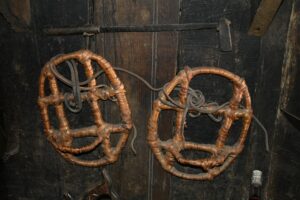
Snowshoeing was invented at least 8000 years ago in central Asia, according to Snowshoe Magazine. The first snowshoe artifacts archaeologists have uncovered date to 4000 BCE, and archaeologists believe humans used them well before that. It’s assumed that snowshoes existed before skis although there have been skis uncovered in Russia that date to 8000 BCE. Archaeologists hypothesize that people looked at the feet of animals who could walk on snow and mimicked their pads by creating a snowshoe that could spread their own weight over a wider surface area.
We know that the ancestors used snowshoes as their primary transportation when crossing the Bering Land Bridge to North America. How do we know this? Archaeologists have discovered that indigenous peoples still used snowshoes, but not skis. European ancestors tend to favor skis as they traveled west, which is why we see skiing as a popular sport originating in Europe.
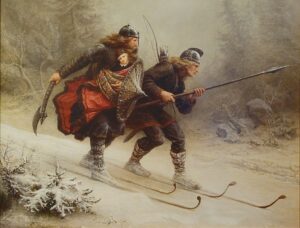 Skis came about as people looked for faster ways to move over snow. According to the Encyclopedia Brittanica, skis were invented at least 10,000 years ago. Apparently archaeologists found skis in Russia dating to 7500 to 8000 BCE. We know that there’s a rock carving depicting skis and skiing in Norway that was carved 4000 BCE and pieces of skis from a Swedish bog date to around 3500 BCE.
Skis came about as people looked for faster ways to move over snow. According to the Encyclopedia Brittanica, skis were invented at least 10,000 years ago. Apparently archaeologists found skis in Russia dating to 7500 to 8000 BCE. We know that there’s a rock carving depicting skis and skiing in Norway that was carved 4000 BCE and pieces of skis from a Swedish bog date to around 3500 BCE.
As an aside, I expect the discrepancy in time between snowshoes and skis has to do with what is considered a ski and a snowshoe in the past. Skis often resembled snowshoes, and snowshoes might have resembled skis at one point, leaving it all to conjecture.
Although the Vikings didn’t invent skiing, the Norse actually gave the name to skis. We got the words ski and skiing from skríða á skíðum—“to stride on skis.” How awesome is that? Anyway, in 1274 the Norse had to outlaw hunting moose while the hunter was on skis because moose were in danger of becoming extinct. Wow. That’s really bizarre. Who would’ve thought skis would be a huge advantage when it came to hunting moose?
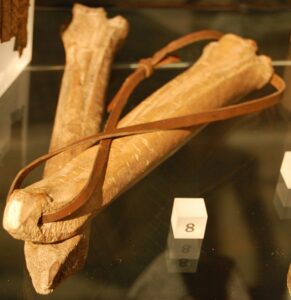
Skate like a Viking! Seriously, our Norse ancestors strapped shin bones of deer or oxen to their feet to skate on the ice. They even used animal fat to make them slipperier. Some Norse used iron, but those who used bone skates tended to be faster. Probably had to do with the smoothness and the friction. Unlike skating blades people use nowadays, these were large, flat surfaces.
The Norse even held speed skating competitions where winners would receive prizes in the form of silver spoons, copper pots, swords, and young horses.
I think this blog post is long enough when it comes to Viking winter preparations and activities. Let me know what you think.
—
Disclaimer: This post contains affiliate links. If you purchase something from these links, I get a small stipend which helps support The Rational Heathen. I would encourage you to support my site. Thanks.
Did you know you can become my patron for as little as $5 a month? This entitles you to content not posted anywhere else. Plus you get to see posts like this three days before the public! Without patrons, I’d be having a very hard time keeping this blog going. Become a patron today!Become a Patron!
Well, okay then. You may be wondering about the title on how I lost three beers and a shot of rum to a goddess. No, I didn’t lose a bet, but it sounds like I did. Actually, I won in the grand scheme of things, but the cost of three twelve ounce curls is sort of amusing.
Let me explain.

Well, this year we got tags for some of our favorite critters, including antelope or pronghorn. If you’ve ever hunted pronghorn, you know that prayers of desperation can accompany the hunt given how wily and fast those beasts are. Hence three beers and a shot of rum.
For those who have never hunted them, understand that pronghorn are the second fastest land animals on the planet–right behind the infamous cheetah. If you google their speed, you’ll see that American antelope can run up to 61 miles per hour. That’s fucking fast. And they have ways to make sure their off your dinner menu.
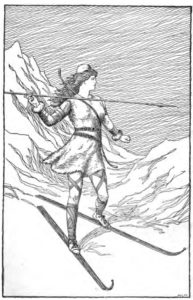 So, many of you know that Skadi is my other main go-to god, or in her case, goddess. She’s not as easygoing as Tyr is — at least, not to me. We started our antelope hunt, and sure as shit, she told me she wanted beer if we wanted a successful hunt. Craft beer. Not something beyond ridiculous, but something cool.
So, many of you know that Skadi is my other main go-to god, or in her case, goddess. She’s not as easygoing as Tyr is — at least, not to me. We started our antelope hunt, and sure as shit, she told me she wanted beer if we wanted a successful hunt. Craft beer. Not something beyond ridiculous, but something cool.
Okay, I agreed. We got our first pronghorn. Yay!

Now, I don’t make casual promises, but my memory isn’t always the best. Yeah, I forgot to buy the beer. Mea culpa. I don’t go into town often, and I don’t drink beer. So neither are simple to get where I live. Add that I have a spouse who generally doesn’t drink either. In other words, I do not have much alcohol to offer at home. Hey, I buy cheap, blended red wine for cooking, okay?
So, I come home from going into town to get groceries and I hear the goddess tapping her foot.
Skadi: “Where’s the beer?”
Me: “Uh…”
Skadi: “Seriously?”
 So, our next hunts were a bit of a disaster. We got on antelope three more times and for various reasons, they spooked, the shot was off, or some other problem. It got bad. Really bad.
So, our next hunts were a bit of a disaster. We got on antelope three more times and for various reasons, they spooked, the shot was off, or some other problem. It got bad. Really bad.
So, in desperation, I took out a shot of rum from the rum I use to make fruitcake and asked Skadi if she would accept the rum.
She agreed. So, I offered her the rum.
 The next day was the beginning of deer season. My spouse woke me up and told me a buck was on our property. I went out there, and after losing the buck for a bit, found him behind me. I shot and he landed in a place where we could get to him. My spouse, incidently, was late to work helping me dress out the buck.
The next day was the beginning of deer season. My spouse woke me up and told me a buck was on our property. I went out there, and after losing the buck for a bit, found him behind me. I shot and he landed in a place where we could get to him. My spouse, incidently, was late to work helping me dress out the buck.
Our deer hunting went stupidly fast and within three days, we had filled all our deer tags.
“Remember the beer,” Skadi said.
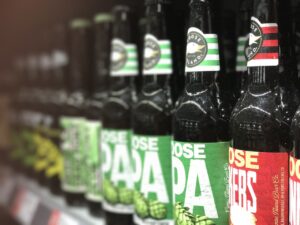
Now, I ended up in the supermarket in the nearby town, looking over the craft beer in the beer section. Luckily craft beers are a thing around here. So, I looked at them, bewildered, until I saw a winter ale with an obvious reference to snow. The goddess said, “yeah, that one!”
It’s an IPA, which if I recall my brewing, makes it more bitter with hops than regular brews. Perfect.
So, Skadi got the shot of rum already and tomorrow she gets three beers. Yeah, I’m hoping for more successful hunts coming up.
…As long as I remember the beer.
—
Did you know you can become my patron for as little as $5 a month? This entitles you to content not posted anywhere else. Plus you get to see posts like this three days before the public! Without patrons, I’d be having a very hard time keeping this blog going. Become a patron today!Become a Patron!
I was talking with a friend of mine and he remarked that humans are an invasive species. I had to think about this a moment because, quite honestly, I don’t consider humans to be an invasive species.
To a large degree, this is an insulting term when referring to ourselves as such. Insulting and wrong, mainly because of the definition of what an invasive species entails. Even though we shouldn’t consider ourselves an invasive species, that doesn’t mean we aren’t damaging the environment and causing extinctions. But calling ourselves invasive isn’t correct.
I’ll go over the facts with you, and give you my take on it.
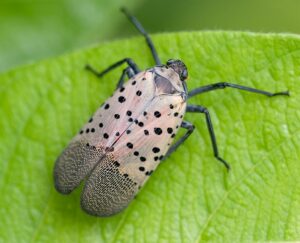
When we talk about invasive species, we often think about the spotted lantern fly or feral hogs. (Both, incidentally are invasive species.) Sometimes we talk about the spotted knapweed or giant hogweed, when it comes to invasive plants. But are humans invasive? Well, not according to the definition.

An invasive species is as defined by the International Union for the Conservation of Nature (IUCN) as “animals, plants or other organisms introduced by man into places out of their natural range of distribution, where they become established and disperse, generating a negative impact on the local ecosystem and species.”
Thanks to the Smithsonian Magazine, who analyzed this very question some time ago, they also came up with other definitions which included a non-native species which has widespread distribution. But do humans fit in the invasive species category?
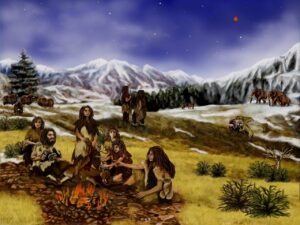
Now, here comes the tricky part. Are we not native to the land? Humans have colonized every continent on Earth except Antarctica at least 20,000 years ago. Most places even earlier because our Homo Sapiens ancestors migrated out of Africa about 100,000 years ago. Yes, many species were around before us, but given that we’ve lived almost everywhere on Earth for a very long time, one could make the argument that humans are indigenous to all continents except Antarctica.
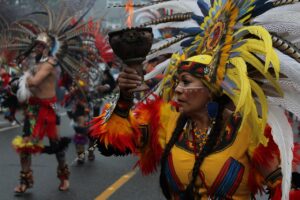
Even in the Western Hemisphere where scientists are still trying to decide when the first humans arrived on the North American continent, humans could be consider indigenous. (Current archaeological finds suggest around 20,000 years ago.) I think that most Native Americans and First Nations people would agree with me on that they are indigenous. And arguing that European descendants are an invasive species doesn’t work, because we’re all the same species.

Part of being an invasive species is having humans introduce the species (intentionally or not) to a place outside the range of normal distribution. That non-native species has to disperse and cause a negative impact on the native species and the environment. The concept of humans introducing themselves is patently absurd, even if we have had a negative impact on other species. So, that doesn’t really count either.
As a side note, if we were an invasive species, where would we return to? The European-descendants to Europe? The Native Americans to Asia? But then, we all came out of Africa, so do we all go back there? The concept is ludicrous. I, for one, wouldn’t go simply because I hate hot weather. And bugs. Africa is too buggy for me.

For all our destructive tendencies, what we should really be considered is a hyperkeystone species. A keystone species is “…defined as organisms that have outsized ecological impacts relative to their biomass. Here we identify human beings as a higher-order or ‘hyperkeystone’ species that drives complex interaction chains by affecting other keystone actors across different habitats.” (Worm B, Paine RT. Humans as a Hyperkeystone Species. Trends Ecol Evol. 2016 Aug;31(8):600-607. doi: 10.1016/j.tree.2016.05.008. Epub 2016 Jun 13. PMID: 27312777.)
In layperson’s terms, a keystone species is an animal that impacts the environment in a way that exceeds its basic needs to survive. A hyperkeystone species affects not only its environment the way a keystone species would, but also affects all the other keystone species no matter where they are.
So, basically we’re not only using up resources beyond what a normal animal of the same mass (weight) would to survive, but we also affect all the other keystone species as well.

Okay, so now you know we’re not an invasive species. But why does that even matter? An invasive species doesn’t really go out of its way to be malicious; it simply does what it always has done to survive. Problem is, it has good success in the new environment because there aren’t any predators to keep it in check. So, it is able to flourish unchecked.
Humans, on the other hand, have no real predators anywhere on Earth to keep our population in check. Sure, we might get taken out by a lion or grizzly bear in the wild, but for the most part, we’ve eliminated the dangers of predators outside of our species by our technology. War, famine, disease, natural and manmade disasters, and all the other blights that come with humanity now keeps our population in check.
Being an invasive species means that it has no way of restraining itself. Hogweed and knapweed spread because that’s their biological programming. Feral hogs destroy their environment because that’s what they do. They don’t think or consider the consequences of their actions.
On the other hand, Humans can recognize when they’re doing damage to the environment. We can make changes in our behavior so that it causes the least harm. That’s why we can’t be an invasive species. We’re cognizant of the changes we’ve made to the environment and have the ability to fix it if the damage is fixable.
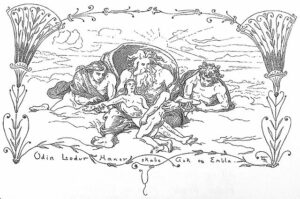 We evolved as part of Earth’s ecosystem. We didn’t just arrive “poof!” out of nothing. The myth of Odin, Vili, and Ve creating humans from tree trunks is a nice story, but it is simply a way our ancestors tried to explain how we came into being. The idea that humans were carved from trees, given life, intelligence, and then given souls suggest that maybe we were crudely carved from life, itself. That may be reaching a bit, but it is something to ponder.
We evolved as part of Earth’s ecosystem. We didn’t just arrive “poof!” out of nothing. The myth of Odin, Vili, and Ve creating humans from tree trunks is a nice story, but it is simply a way our ancestors tried to explain how we came into being. The idea that humans were carved from trees, given life, intelligence, and then given souls suggest that maybe we were crudely carved from life, itself. That may be reaching a bit, but it is something to ponder.
The point is that even the Norse myths suggest we came from the land. We didn’t just appear out of nowhere, even if the gods had their hands in our creation. We weren’t told, “You are masters over all creation.” On the contrary, we were given the chance to thrive and strive to be better.
That doesn’t make us masters of the land, but our role as hyperkeystone species puts us in a spot where if we do damage, we need to fix it in order to survive.
Luckily, we have the gods who can help us. No, they won’t get us out of the mess we’re in, but they can work with us to undo the damage we’ve done as a species. All we have to do is ask while we do the heavy lifting. Now, we just have to clean up after ourselves.
—
Did you know you can become my patron for as little as $5 a month? This entitles you to content not posted anywhere else. Plus you get to see posts like this three days before the public! Without patrons, I’d be having a very hard time keeping this blog going. Become a patron today!Become a Patron!